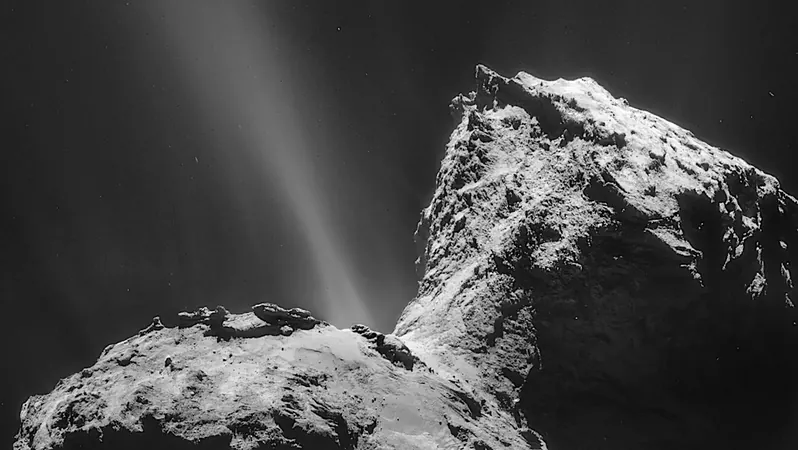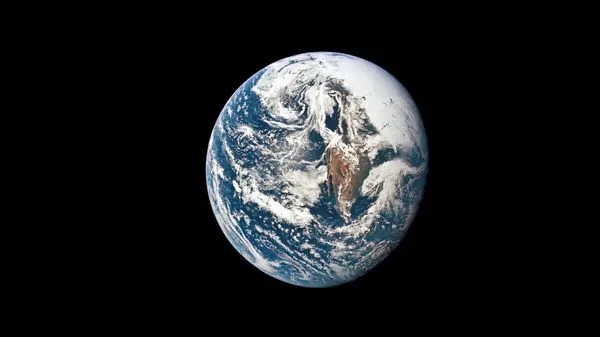
Unraveling the Mysteries of Comet 67P/Churyumov: New Insights into Dust Ejection
2024-10-07
Author: Siti
Unraveling the Mysteries of Comet 67P/Churyumov: New Insights into Dust Ejection
Recent advancements in understanding the activity of Comet 67P/Churyumov-Gerasimenko have led scientists to enhance existing thermophysical models, particularly focusing on the effects of pressure buildup within the comet's pebbly nucleus. This study sheds light on the interactions of water and carbon dioxide within the comet, offering a clearer picture of the ejection mechanisms that drive its activity.
To explore the comet’s behavior, researchers experimented with varying quantities of water (H2O) and carbon dioxide (CO2) to create accurate simulations of the internal and external material of proposed water-enriched bodies (WEBs) found on the comet. The findings reveal that these WEBs could account for the peak water flux observed by the European Space Agency’s Rosetta mission. However, the introduction of a time-resolved heat flow factor significantly altered the expected water fluxes, especially as the comet moved away from perihelion, contradicting earlier equilibrium models.
The computational models indicated that while WEBs continuously eject dust, the ejection rate far exceeds the measured mass loss and erosion rates. This discrepancy suggests the active surface area responsible for the ejection is either much smaller than the total surface area of the comet or that substantial amounts of dust are falling back after ejection.
When simulating the conditions of CO2-rich, non-WEB materials, researchers discovered that large chunks are only ejected under specific environmental conditions, such as low diffusivity among the comet’s pebbles or intense sunlight during southern summer. Alarmingly, the models predicted CO2 outgassing rates significantly greater than those observed, highlighting fundamental challenges in current models which rely on CO2 to drive surface erosion.
The study ultimately suggests that the ejection of large chunks due to CO2 is likely a localized event, distinct from surface erosion and water emission processes. This presents a complex scenario for scientists as they attempt to model global production rates of gas, dust, and ejected chunks from comets, emphasizing the sensitivity of these activity mechanisms to internal material structure, including porosity and diffusivity.
As research continues, the findings underscore the intricate dynamics of Comet 67P/Churyumov, propelling our understanding of cometary phenomena and their implications for planetary science. The complete study will soon be published in the Monthly Notices of the Royal Astronomical Society, promising to spark further discussions in the field of astrophysics.
Conclusion
Stay tuned for more captivating discoveries as scientists delve deeper into the secrets of our solar system’s most enigmatic bodies!



 Brasil (PT)
Brasil (PT)
 Canada (EN)
Canada (EN)
 Chile (ES)
Chile (ES)
 España (ES)
España (ES)
 France (FR)
France (FR)
 Hong Kong (EN)
Hong Kong (EN)
 Italia (IT)
Italia (IT)
 日本 (JA)
日本 (JA)
 Magyarország (HU)
Magyarország (HU)
 Norge (NO)
Norge (NO)
 Polska (PL)
Polska (PL)
 Schweiz (DE)
Schweiz (DE)
 Singapore (EN)
Singapore (EN)
 Sverige (SV)
Sverige (SV)
 Suomi (FI)
Suomi (FI)
 Türkiye (TR)
Türkiye (TR)